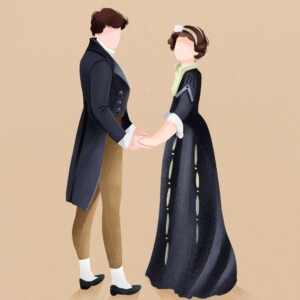Episodes

Thursday May 18, 2023
Thursday May 18, 2023
The Wolf Of Wall Street
The Wolf Of Wall Street Full Book Introduction
This book is a memoir of a man who was once known as “The Wolf of Wall Street.” At one point, Jordan Belfort made a whopping $12 million in just three minutes. Forbes magazine called him “a twisted version of Robin Hood” in the stock market. He was later sentenced to prison for having swindled investors out of approximately $200 million. Through Belfort’s revelation of his life’s trajectory, we get a glimpse into the dazzling world of power, greed and excess.
Author : Jordan Belfort
Jordan Belfort is a former stockbroker who built his career from nothing and became a multimillionaire by the age of 31. He once made a whopping $12 million in just three minutes. With his silver tongue and little conscience, he established himself as a prominent figure of Wall Street. He has been described as a passionate speaker, a cunning profit maker, and a helpless drug addict. His merciless business style earned him the title “The Wolf of Wall Street.”
Overview | Chapter 1
Hi, welcome to bookey. Today we will unlock the book The Wolf of Wall Street. It was 1998 in a luxury house on the coast of Long Island. The smell of cigarette smoke and alcohol hung over the place. Young men and women were dancing like there was no tomorrow. It was a lavish party. Suddenly, people heard the wail of a siren. Policemen entered the house, walked straight up to Jordan Belfort and handcuffed him. Belfort was once a prominent stockbroker of Wall Street, infamously known as what Forbes called the “twisted version of Robin Hood,” and “The Wolf of Wall Street” within the Wall Street circle. Born and raised in an ordinary family, Belfort has no academic background in finance. However, he was able to establish himself in the capital-driven world within a very short time. Through despicable schemes, he was able to make $12 million effortlessly in just three minutes. By the age of 31, Belfort was already a multimillionaire. But at 36, he was arrested on federal fraud charges. How did Belfort accomplish this primitive capital accumulation within such a short time? And how did he end up in jail, redeem himself later, and even get his life story on the big screen?
The Wolf of Wall Street is more than just an autobiography. Rather, it’s an intriguing story of mindset transformation. Belfort was encouraged by a fellow prisoner to write this book in jail. While he was in jail reflecting on his past, the outside world was still perturbed by what he had done. Several publishers competed to get the rights to publish his book. Later, Hollywood showed interest in making this book into a movie. It was reported that Brad Pitt and Leonardo DiCaprio competed to play the role of Belfort in the film of the same name. Leonardo DiCaprio got the role in the end, and the film was a blockbuster, grossing several hundreds of millions of dollars. It was nominated for several awards, including the Academy Award for Best Picture, and was also selected as one of the top 10 Movies of the Year at the 14th AFI Awards.
What makes the difference between a financial magnate and the average Joe investor? Are they born rich and tenacious? Are they always successful and do they never fail? We’ll find out the answers by following the foot steps of Belfort, a Wall Street’s legendary figure whose life was once defined by greed, sex, and drugs. We’ll unlock this book in the following four parts.
Part 1: The making of a business genius.
Part 2: Founding his own firm and making a mint.
Part 3: Fighting against the FBI.
Part 4: Self-redemption.

Thursday May 18, 2023
Thursday May 18, 2023
Educated
Educated Full Book Introdction
The protagonist of this book, Tara Westover, didn’t attend school until the age of seventeen. When she was finally given the chance, she pursued learning with an unusual determination. She went to college at Brigham Young University and later got a Ph.D. from the University of Cambridge, forever changing her fate. In this book, Westover recounts how she broke free from her family’s restrictions and changed her destiny one step at a time. This book became a New York Times bestseller soon after its publication. It was also Top 1 of Bill Gates’ book recommendations of 2018.
Author : Tara Westover
Tara Westover is an American author and historian. She was enrolled at Brigham Young University as a former homeschooler and got a Bachelor of Arts degree in 2008. Then she was admitted into Cambridge University, where she earned a Master of Philosophy in 2009 and a Ph.D. in history in 2014. In 2019, the publication of this memoir made her one of Time’s most influential people of the year.
Overview | Chapter 1
Hi, welcome to Bookey. Today we will unlock the book Educated: A Memoir.
In the mountains of Idaho, there was a family: a couple with their seven children, all of which were born at home, several of which who didn’t even have a birth certificate. The kids never went to school; neither did they see a doctor regardless of if they fell sick or were injured. The author and protagonist of this book, Tara Westover, was the smallest of the seven kids. Her father ran a junkyard, where Tara spent her entire childhood. There were no sounds of learning. Only the rumble of the crane. Tara didn’t set foot in a school before the age of 17. Instead she spent her days in fear, dreading the violence her brother Shawn, might inflict on her at any moment.
After growing up in such a toxic environment, Tara found an escape at Brigham Young university where she enrolled as a homeschooler. She received her Bachelor of Arts degree in 2008. Subsequently, she was admitted into Cambridge, where she earned a Master of Philosophy in 2009 and a Ph.D. from Harvard in history in 2014. Educated: A Memoir, will tell you how Tara broke free from the confinement of her family and changed her life.
In this memoir, Tara Westover recounts in first person how she grew up and how she pursued learning. It shows us how education can provide infinite possibilities. Published in 2018, this is Westover’s first book, but it has been hugely successful ever since its debut. The book soon became No. 1 on almost every major bestseller list in the U.S., and Westover herself was listed among Time’s most influential people of 2018. Bill Gates highly recommended this book, saying, “she got me to reflect on my own life while reading about her extreme childhood…An amazing story, and truly inspiring. It’s even better than you’ve heard.”
Next, we’ll introduce the major content of this book through three parts. Together let’s see how Tara broke free from her family, reshaped herself through education, and eventually changed her fate.
Part One: Tara’s turbulent life before education;
Part Two: Receiving education and fighting her old beliefs;
Part Three: Reshaping herself with advanced education.

Thursday May 18, 2023
Thursday May 18, 2023
The Compound Effect
The Compound Effect Full Book Introduction
Why do so few people succeed? What do they have in common? Is there a standard formula for success? You will find the answers after listening to this bookey of The Compound Effect. This book shows us that success is actually a science and has nothing to do with luck. If you master the basic principle of the science of the compound effect and act according to its principles, success is not only within reach, but you will become addicted to it.
Author : Darren Hardy
Darren Hardy, the founding publisher and chief editor of SUCCESS magazine, is a central figure in the personal development and success media business. He produced two personal development-focused television networks and produced more than a thousand TV episodes that featured several top-class experts. He has also provided consulting services to thousands of enterprises and holds board positions in many companies and non-profit organizations. As a famous keynote speaker, he also made appearances on many TV shows broadcast in the US.
Overview | Chapter 1
Hi, welcome to Bookey. Today we will unlock The Compound Effect: Jumpstart our Income, Your Life, Your Success.
First, let me ask you a question. Between receiving 3 million dollars immediately or receiving one penny that doubles for 31 days, which one would you choose? It’s not a hard decision, right? If you understand the profound effect of compounding, you would likely choose the latter, one cent doubled for 31 days. Why? Let’s make a comparison. Say you choose to have one cent at the beginning but have it doubled for 31 days and your friend chooses to receive 3 million dollars. What will happen? On day 5, you will have 16 cents. On day 10, the money in your pocket increases to 5.12 dollars. On day 20, you possess 5,243 dollars, while your friend is still bragging about his 3 million dollars. When it comes to Day 29, the value of your asset turns into about 2.7 million dollars, although it is still less than your friend’s. Now it’s the last day, day 31, and the original one cent has now become 10,737,418.32 dollars, three times more than your friend’s money. You turned the tide around and left your friend far, far behind, even though he had a huge advantage against you at the beginning.
That’s the magic power of the compound effect and the secret to success. The author of today’s book, Darren Hardy, believes that success is a matter of science and that it has nothing to do with a person’s luck. As long as you understand its principles and follow its rules, you will live your dream. Darren Hardy is a live example. Based on the principles he acquired in this field, he achieved an annual income of more than 1 million dollars at age 24 and established a company worth 50 million dollars at age 27.
Why was Hardy able to discover the principle and use it to amass a fortune? It all started with his job as the publisher of SUCCESS magazine. This job let him stay in the center of the personal development industry, and he needed to interview six successors who were among the best in their industries every month. It’s safe to say that he had collected all the insights and wisdom this industry has to offer. With excellent case studies on hand, he compiled and analyzed their best ideas, weeded out any superficial and extravagant remarks and polished them down to the most essential principle of success to write this book. The Compounding Effect is a detailed and specific action plan. If you can make full use of this book and let it guide your daily activities, you will definitely live your dream.
Now, let’s get closer to the truths about success in six parts:
Part One: The compound effect in action
Part Two: The start of the compound effect: Choices
Part Three: The key of the compound effect: Habits
Part Four: The helper of the compound effect: Big Mo
Part Five: What is influencing you? And Part Six: A little bit more effort.

Thursday May 18, 2023
Thursday May 18, 2023
The Four Agreements
The Four Agreements Full Book Introduction
We are born into a nightmare. From birth, our parents or guardians teach us the ways of the social world. They want to help us to adapt to the rules and belief systems in this current nightmare; until a day comes when we start to educate ourselves to be like obedient animals with freedom taken from us. Luckily, The Four Agreements can rescue us from this nightmare. The author deploys these four agreements as a weapon for people to turn against their everyday suffering and guilt. It is a battle to break the intangible bonds of entrenched obedience and have the ability to pursue true happiness.
Author : Don Miguel Ruiz
Don Miguel Ruiz was born into a family of healers. They were practitioners of ancient Toltec traditions. After high school, he was admitted to study medicine and graduated as a surgeon. Following a near-death experience, Ruiz became interested in Toltec culture, which he went on to study, conducting research into the heritage of pre-Columbian healing and teaching. Today, he is a Nasual of the Eagle Knight lineage. This means he is responsible for guiding people towards spiritual freedom and committed to sharing the Toltec culture to enlighten future generations.
Overview | Chapter 1
Hi, welcome to Bookey. Today we will unlock the book The Four Agreements: A Practical Guide to Personal Freedom, A Toltec Wisdom Book.
From a Southern Mexican perspective, Toltec culture embodies thousands of years of wisdom. The Toltecs were mostly scientists and artists. Over many generations, their civilization encouraged people to explore spiritual knowledge in a quest for ultimate truth. Toltecs advocate spirituality but do not preach religion. Their culture is devoted to helping people achieve spiritual freedom, transcendent love and happiness.
Over the past few thousand years, the Toltecs have guarded their ancestral wisdom, keeping it a secret, fearing the probability of their spiritual riches being misused by European conquerors and miscreant disciples. As their homeland became exposed to the outside world, it was more vital to protect Toltec knowledge and keep it pure. However, in the spirit of sharing wisdom and helping people on their route to enlightenment, Don Miguel Ruiz finally decided to sit down and write to let more people know about Toltec culture through his book The Four Agreements.
This book can truly set your mind free. In its pages, Ruiz tells us that everyone is born into a nightmare. From the moment we are born, our parents teach us how to adapt to the rules and regulations of the nightmare until the day comes when we start to train ourselves to conform and become obedient like a well-trained animal with no hope of freedom. Luckily, The Four Agreements can rescue us from this fate. The agreements of the title are as follows: “be impeccable with your word,” “don’t take anything personally,” “don’t make assumptions,” and “always do your best.” Wielding these four agreements as our tools, Ruiz aims to help us perceive the nature of our suffering and to break free from invisible bondage, so as to chase true freedom and happiness.
Next, let’s talk through the book’s content in three parts:
Part One: A painful life in nightmares
Part Two: Four agreements that will change your life
And Part Three: Break free from old agreements and win back your freedom

Thursday May 18, 2023
Thursday May 18, 2023
Think Like A Monk
Think Like A Monk Full Book Introduction
The media constantly tries to let us know what a successful life should be like and what manner of person we should best strive to be, but when we follow their “guidance”, we find that our lust for fame, money, sex, and influence is insatiable. Temptation is endless, and the relentless pursuit of these desires means that we end up in a constant state of disappointment and dissatisfaction. It’s exhausting. Think Like a Monk offers other ways of engaging with the world and living a better life. Following the example of monks enables us to become more focused, self-disciplined, purposeful, and altruistic. The monks’ lifestyle leads to peace, tranquility, and serenity.
Author : Jay Shetty
Jay Shetty is a New York Times bestselling author as well as an award-winning podcast host. In 2020 he was selected by Yahoo Finance as one of their 10 most influential people. A few years before, in 2017, he made it into the Forbes 30 under 30 elite list. In 2019, Shetty launched his On Purpose lifestyle podcast, and it soon became the world’s top-ranking healthy living podcast. Celebrity guests on the show have included Kobe Bryant, Ray Dalio, and Yuval Harari.
Overview | Chapter 1
Hi, welcome to Bookey. Today we will unlock the book Think Like a Monk: Train Your Mind for Peace and Purpose Every Day.
But why should you think like a monk? Well, if you want to learn how to play basketball, you would probably want to train with Michael Jordan. Or, if you’re trying to get in touch with your creative side, Elon Musk is your man. What if you want to learn how to put on an unforgettable performance? Beyoncé can definitely give you some pointers there. Now, if you’re looking to train your mind to find peace, serenity, and purpose, then learning from a monk would be an excellent place to start. Why is that, you say? Let’s begin by exploring Jay Shetty’s own experience.
At the age of 18, Shetty was a freshman at the Cass Business School in London. A friend of Shetty’s asked him to hear a monk give a lecture, but Shetty was skeptical and turned down the invitation. At this time in his life, Shetty was only interested in people who made their own opportunities and their success stories. Despite Shetty’s reluctance, finally, his friend convinced him to go to the lecture. Later, Shetty described the experience as feeling like he “fell in love.”
Gauranga Das was the monk’s name. He was in his mid-30s, an Indian who had dropped out of the Indian Institute of Technology, regarded as India’s MIT. He had given up the very life many people desperately strive for. Yet, he appeared happy, happier than other people enjoying high prestige, status, or good looks.
Monks like Das claim to enjoy elevated mental states, and science backs them up. In a study of the Buddhist monk Matthieu Ricard’s brain, researchers found that the level of his gamma waves, which are associated with attention, memory, learning, and happiness, was the highest they had ever observed. He became known as “the World’s Happiest Man.” Brain scans of 21 other meditating monks similarly revealed enhanced brain activity associated with these functions. Even after meditation, it was considerably elevated and sustained compared to a control group of subjects who did not meditate.
Like many people, Shetty’s goal in life was to get married and earn a fortune. It was not until he heard Das’ speech that he found his true path. He is determined to explore new ideas and ways of living, practicing humility, compassion, empathy, and other altruistic qualities. After several twists and turns in his life, finally, he joined a monastery and became a monk. According to Shetty, if he can learn to think like a monk, anyone can.
If you cannot or would rather not join a monastery, at least not right now, you can always begin your journey by reading this book. In it, Shetty shares what he has learned in his life. If you take his advice seriously and put it into practice, you will find meaning, truth, passion, and purpose in your life. We will all learn how to follow his example through the following three parts:
Part One: Avoid External and Internal Influences
Part Two: Reshape Your Life to Achieve Growth
Part Three: Keep an Open Mind to the World

Thursday May 18, 2023
Thursday May 18, 2023
The Metamorphosis
The Metamorphosis Full Book Introduction
The Metamorphosis is a novel written by Franz Kafka about a man named Gregor who wakes up one day only to find that he has been transformed into a giant beetle. The novel follows Gregor as he navigates his new life and the challenges it presents while also exploring themes of isolation and alienation.
Author : Franz Kafka
Franz Kafka was a German-speaking Jewish novelist and short story writer. Born in Prague in 1883, Kafka is widely considered one of the major figures of 20th century literature. His works, grappling with feelings of inadequacy, guilt, and alienation, have been interpreted as representation of the anxieties and struggles in modern life.
Overview | Chapter 1
Hi, welcome to Bookey. Today we will unlock the book The Metamorphosis.
Are you looking for a unique and thought provoking read? Look no further than The Metamorphosis by Franz Kafka. This classic novel tells the story of Gregor Samsa, a man who wakes up one morning to find that he has been transformed into a giant insect. Doesn't that sound ridiculous? So why wait? Get your hands on a bookey of The Metamorphosis today and embark on a journey of self discovery and contemplation. Trust us, and you won't be disappointed.
The Metamorphosis is a novella by Franz Kafka written in 1915. As one of the major figures of 20th century literature, Kafka was born in Prague in 1883 and wrote primarily in German, although his work has been translated into many languages. He is known for his distinctive style, which combines elements of realism, absurdity, and surrealism to explore themes of isolation, powerlessness, and the search for meaning in modern, industrialized society. The Metamorphosis, the book we are going to learn today, is one of his most typical works and has a profound influence on the development of modern fiction. Now, let’s together explore its charm.
It follows the story of Gregor Samsa, a poor travelling salesman who wakes up one morning to find himself transformed into an insect. As a beetle, he cannot take care of his whole families as before. In other words, he has become a burden for the Gregor’s family. Latter, his families decide to isolate and neglect him, which lead to his death. The Metamorphosis is a powerful exploration into themes of alienation and acceptance, with implications for readers still relevant today and has inspired many to think more deeply about our place in the world.
The author of The Metamorphosis, Franz Kafka, was a Czech born writer who is widely considered one of the major figures of 20th century literature. Kafka was born in Prague in 1883 and wrote primarily in German, although his work has been translated into many languages. He is known for his distinctive style, which combines elements of realism, absurdity, and surrealism to explore themes of isolation, powerlessness, and the search for meaning in modern, industrialized society. Kafka's most famous works include The Metamorphosis, The Trial, and The Castle, all of which are considered classic works of literature and have had a profound influence on the development of modern fiction.
On the one hand, The Metamorphosis has had a significant impact on literature and cultural studies. It is often considered a classic of modernist literature, and it has inspired many other works of fiction, including The Fly and The Incredible Hulk. The book has also been interpreted as a commentary on the industrialization and modernization of society, as well as a metaphor for the experiences of Jews in Eastern Europe during Kafka's lifetime.
On the other hand, The Metamorphosis has also had an impact on the way that we think about the relationship between humans and animals. The book challenges the idea that humans are superior to animals and suggests that we are all part of the same web of life. This message has resonated with many readers, and it has inspired people to think more critically about our treatment of animals and the natural world.
Now, we will discuss this surreal novel in three parts.
In Part One, we will tell about the plot of the transformation and Gregor’s family.
In Part Two, we will analyze the characters in this novel.
In Part Three, we will discuss the artistic style and theme.

Thursday May 18, 2023
Thursday May 18, 2023
The Great Gatsby
The Great Gatsby Full Book Introduction
The story unfolds when Nick, a poor worker, accidentally stumbles into the life of lavish millionaire Gatsby. Nick’s distant cousin, Daisy, was the young Gatsby’s sweetheart. Now she is married to someone else. Gatsby life is decadent. Nick discovers Gatsby is still in love with Daisy. Gatsby spends money recklessly to impress her and rekindles their affair. It is an immoral and deceitful liaison, taking place behind Gatsby’s glamorous veneer. Later, Gatsby realizes the relationship cannot simply reset to the way it was. The story ends with a string of tragedies, someone is run over by a car, and the young Gatsby is found dead in his private pool.
Author : Francis Scott Fitzgerald
Francis Scott Fitzgerald was one of the most outstanding writers of the twentieth century. A representative of the Lost Generation, he chronicled the “Jazz Age, ” indeed, he was the period’s poet laureate, popularizing the term in his works. His career encompasses over one hundred novels and short stories, including This Side of Paradise, The Beautiful and the Damned, and Tender Is the Night. His best-known work is The Great Gatsby. It has received widespread acclaim, ranking among the “Top 100” in lists compiled by The Guardian, the BBC, and Time magazine, cementing Fitzgerald’s preeminent status in modern American literature.
Overview | Chapter 1
Hi, welcome to Bookey. Today we will unlock F. Scott Fitzgerald’s novel, The Great Gatsby. The book tells the story of the millionaire Jay Gatsby’s tragic attempts to rekindle a lost romance.
In 1998, the U.S. Publisher Modern Library invited several critics to nominate the top 100 English novels of the century. The Great Gatsby came in second after James Joyce’s Ulysses. The American poet and critic T. S. Eliot called it “the first step that American fiction has taken since Henry James,” while the renowned director and choreographer Tony Tanner crowned it “the supreme American novel.” The novel is a staple in the U.S. middle school curriculum and beloved across the country.
However, when it was first published, this seminal work of literature met with a lukewarm reception. At the time, F. Scott Fitzgerald’s earlier novels, This Side of Paradise and The Beautiful and the Damned, had already won him acclaim as a writer. Compared to those two works, The Great Gatsby was a commercial failure, selling fewer than 20,000 copies. It wasn’t until decades later, after the Second World War, that the novel started to gain popularity. It would later become a best seller, continuing to sell millions of copies through the twenty-first century.
The Great Gatsby describes American society during the 1920s. After the First World War, the US economy was booming. Evidence of lavish entertainment and celebration could be seen everywhere. And many people indulged their hedonistic, decadent lifestyles, straying from traditional moral and ethical constraints. Fitzgerald christened this era the “Jazz Age.” His writing presents an objective view of the pleasure-seeking conditions he witnessed. That’s why he became known as the chronicler and poet laureate of the period.
The novel identifies and defines the vibrant spirit of the Jazz Age. The book contrasts the luxury of the living conditions with the tragic story of a failed love. Going far beyond the romance itself, The novel delves into the inevitable destruction caused by the relentless pursuit of the “American dream.” In this bookey, we will introduce The Great Gatsby in three parts:
Part One summarizes the main plot and introduces the tragic and elusive Gatsby;
In Part Two, we analyze the character of Gatsby, and why he is described as “great”;
Finally, Part three talks about the historical background of the novel and F. Scott Fitzgerald’s life experiences. These help us understand the back-story of the book’s conception.

Thursday May 18, 2023
Thursday May 18, 2023
The 7 Habits Of Highly Effective People
The 7 Habits Of Highly Effective People Full Book Introduction
This book, as the title says, is about the seven habits of highly effective people. It teaches us how to achieve victory from the private to the public spheres, thereby making a tremendous change in life and career, and attaining both success and happiness. Known as the “Bible” of the American business community and government management department, the book is included in the training course of the Fortune Global 500 corporations, and is ranked by Forbes as one of the ten most influential management books in history.
Author : Stephen Covey
The author of this book, Stephen Covey, was a world-renowned management guru and a well-respected leadership authority. He has a high and long-standing reputation in leadership theories, family and interpersonal relationships, and personal management. In the US and even around the world, his accomplishment of thoughts is comparable with that of Carnegie, Peter F. Drucker, and Jack Welch. Covey is called “a master of thoughts” of the American academic community. Time magazine named him “one of the twenty-five most influential people in American history”, and “a mentor of human potential.”
Overview | Chapter 1
Hi, welcome to Bookey. Today we will unlock the book The 7 Habits of Highly Effective People: Powerful Lessons in Personal Change. It’s mainly about how to become a highly effective person, and attain both success and happiness.
Many of us have shared an experience of having so many things to do every day, and feeling that time is not enough. Despite working all day long and feeling exhausted at the end of the day, we can’t seem to get all the work done. However, there are some people around us who barely work overtime, but still do a great job. They can even enjoy some leisure time. Why is that? Are they born with a higher IQ?
The truth? This is because some of them have developed good habits of high effectiveness, which leads to a comfortable yet highly effective life.
Perhaps you are wondering: what is high effectiveness? High effectiveness refers to the balance between production and production capacity, which is referred as the P/PC balance in this book. P stands for production, and PC stands for production capacity. Have you heard of the fable about the goose and the golden egg? A farmer has a goose that can lay golden eggs, and he soon becomes fabulously rich. However, the greedy farmer becomes unsatisfied with only one golden egg per day, so he kills the goose, hoping to take out all of the golden eggs from it. To his surprise, there are no golden eggs inside the goose. The goose is dead, so there’s no way he can get another golden egg. The farmer has ruined everything for himself.
In the above fable, what is produced is the golden eggs, and production capacity, namely, the producing asset or capacity to produce, is the goose that lays golden eggs. If we “focus on golden eggs and neglect the goose,” we will lose both the goose and the eggs. Conversely, if we “only take care of the goose with no aim toward the golden eggs,” we can feed neither ourselves nor the goose.
Therefore, only when you take good care of the goose can you get golden eggs. And only when you control your desire to ask too much from the goose can you keep it alive. Likewise, only when you strike a balance between work performance and well-being, can you attain real effectiveness and make greater achievements. This book tells us exactly the specific ways that can help you easily achieve high effectiveness.
The author of this book, Stephen Covey, was a world-renowned management guru and a well-respected leadership authority. He has a high and long-standing reputation in leadership theories, family and interpersonal relationships, and personal management. Recognized as “a master of thoughts” of the American academic community, Covey was named “one of the twenty-five most influential people in American history” and “a mentor of human potential” by Time magazine.
The 7 Habits of Highly Effective People: Powerful Lessons in Personal Change, is also known as the “Bible” of the American business community and government management department. It’s ranked as one of the ten most influential management books in history by Forbes. It will teach you seven good habits. These habits will help you become successful and highly effective with little struggles, achieve personal and interpersonal effectiveness, and make a tremendous change in your life and career.
Without further ado, we will unlock the book in the following three parts:
Part One: How to improve personal effectiveness and achieve private victory
Part Two: How to improve interpersonal effectiveness and achieve public victory
Part Three: How to constantly renew and improve ourselves

Tuesday Apr 11, 2023
Tuesday Apr 11, 2023
The 5 Am Club
The 5 Am Club Full Chapter Brief
The 5 AM Club by Robin Sharma is a life-changing book that shows you how to make the most of your mornings and transform your life. It introduces the concept of the 5 AM Club and provides a step-by-step guide to creating a morning routine that can help you improve your mindset, heartset, healthset, and soulset. With practical advice, inspiring stories, and powerful tools, this book is a must-read for anyone who wants to unlock their full potential and achieve their biggest goals.
Overview | Chapter 1
Hi, welcome to Bookey. Today we will unlock the book The 5 AM Club by Robin Sharma.
In today’s Bookey, we will follow the footsteps of three people.
The first one is a frustrated entrepreneur who was about to go bankrupt and even commit suicide.
The second one is an artist who was struggling to find ways to boost his creativity and enhance his abilities to create remarkable art pieces that would leave a lasting impression in his field.
Both of them took part in a personal optimization conference addressed by a legendary business guru, the Spellbinder, where they met a billionaire who disguised himself as a poor man and shared his success story with the two.
The billionaire is called Stone Riley. He invited the entrepreneur and the artist to his beach house in Mauritius to teach them the secrets of a world-class morning routine, which is also his key to success. The only requirement was that they should meet at 5 AM the next morning.
The next morning, a chauffeur-driven Rolls-Royce collected them and delivered them to a hangar containing a sleek, ivory-colored private jet, which bore the logo: “5AC.” What did it mean? The logo stood for “The 5 AM Club.” Then they set off on a journey to Mauritius. Over the next few days, the billionaire explained to them how getting up at five AM was the way he had learned to escape mediocrity and achieve greatness. Through the billionaire’s teachings, the two students gained a new outlook on life and the potential to transform everything for the better.
The author Robin Sharma presents the information through a fictional story, following the journey of three characters who are seeking personal and professional success. This storytelling approach allows us to engage with the book in a more relatable and memorable way, as they follow the characters’ struggles and triumphs.
Next, why not join them on their journey? We will pick out the three important key points in this book that can lead you into the 5 AM Club.
In Part One, we will discuss the four interior empires, which include Mindset, Heartset, Healthset and Soulset.
In Part Two, we will explore the 20/20/20 formula, which can be used to take advantage of the first hour of the day.
In Part Three, we will talk about the essentialness of sleep and the pre-sleeping ritual, which can help us gain better sleep.

Tuesday Apr 11, 2023
Tuesday Apr 11, 2023
Pride And Prejudice
Pride And Prejudice Full chapter Book Summary
The primary focus of the novel Pride and Prejudice is the extended romance between Elizabeth and Darcy. In the end, they are happily married. Secondary plotlines unfold around the romances of Jane and Bingley, Lydia and Wickham, and Charlotte and Collins. Through her writing, Austen explores concepts of love, wealth, and matrimony. These remain thought-provoking and meaningful to readers even to this day.
Overview | Chapter 1
Hi, welcome to Bookey. Today we will unlock Pride and Prejudice, a masterpiece from the celebrated British novelist Jane Austen.
In 2003, a poll conducted by the British Broadcasting Corporation produced a shortlist of the nation’s 100 best-loved novels. Pride and Prejudice was ranked second. The novel was written over two hundred years ago, at the end of the 18th Century. Yet, today, it remains cherished by readers from all over the world. The American literary critic Edmund Wilson once said, “There have been several revolutions of taste during the last century and a quarter of English literature, and through them all perhaps only two reputations have never been affected by the shifts of fashion: Shakespeare’s and Jane Austen’s.”
In fact, the prominence of this enduring literary classic has dimmed little over time, notwithstanding the relatively narrow scope of its narrative. American author and thinker Ralph Waldo Emerson has criticized Austen’s novels in general for being limited to themes of marriage and family. Charlotte Brontë, the British novelist who wrote Jane Eyre, which we have unlocked for you in a previous bookey, made a similar comment on the stifling domesticity of Austen’s world, saying, “I should hardly like to live with her ladies and gentlemen in their elegant but confined houses.”
Indeed, in her lifetime Austen wrote six novels and all of them, without exception, focus on marriage and family. Pride and Prejudice, the novel we are interpreting today, follows this pattern, telling of the romances and marital experiences of four young couples. Austen had a flair for evoking such seemingly trivial topics in her writing. In her own words, she put it like this, “3 or 4 families in a country village is the very thing to work on.” On one occasion, someone suggested to her that she should try dabbling in other literary genres, but she tactfully turned down this suggestion, saying, “No, I must keep to my own style and go on in my own way.”
Austen’s preference to write about marriage and family is inseparable from her personal experience. She was born in Parsonage House in the town of Steventon in the English county of Hampshire, the seat of an ancient family. Her father was the local rector, and the family were financially secure. She remained unmarried throughout, living with her parents and sisters for the greater part of the 41 years of her life. Most of her days revolved around household chores, visiting family and friends, participating in balls, watching plays and playing cards. These occupations were similar to the experiences engaged in by the women in her novels. And her day-to-day cares also parallel the concerns of the women she wrote about – fashionable clothes, neighbourly gossip, interesting friends and handsome gentlemen. Therefore, her novels consist of mundane and seemingly trivial details of everyday life. Her plots unfold, being spurred by seemingly ordinary events such as dances, social visits over tea, family dinners, games of cards, as well as countless other episodes of idle chatter and leisurely walks.
Yet the restricted scope of her material did not impede Austen’s vision. Perhaps Austen’s own perspectives are best represented by something said by Elizabeth Bennet, the female protagonist in Pride and Prejudice. When her love interest Darcy tells her: “The country can in general supply but few subjects for such a study. In a country neighbourhood you move in a very confined and unvarying society.” Elizabeth replies, “But people themselves alter so much, that there is something new to be observed in them forever.” Even if there were limitations to the types of characters that Austen wrote about, she could through them always reveal aspects of life’s theatricality. She wrote of the universal and multiple facets of human nature.
We will now share our interpretation of the novel in three parts. We will find out how Austen’s simple story of marriage and family has stood the test of time and continued to touch the hearts of so many, right up until the present day.
In Part One, we will provide you with a summary of the novel’s plot;
In Part Two, we will interpret for you the way Jane Austen has conveyed various perspectives on marriage in the novel;
In Part Three, we will share several key aspects of the novel’s comedy with you.








